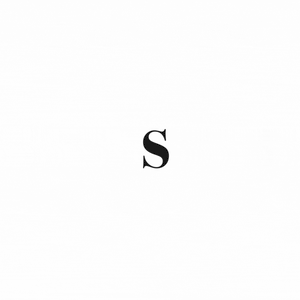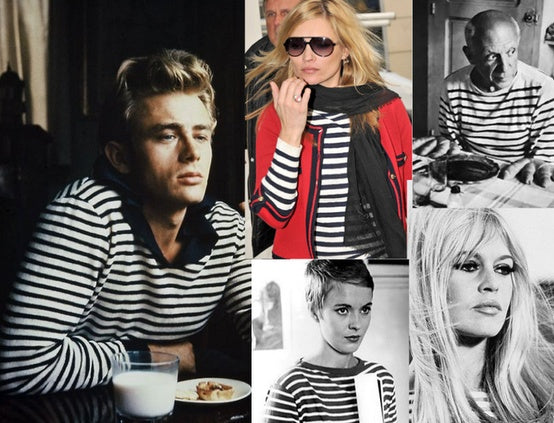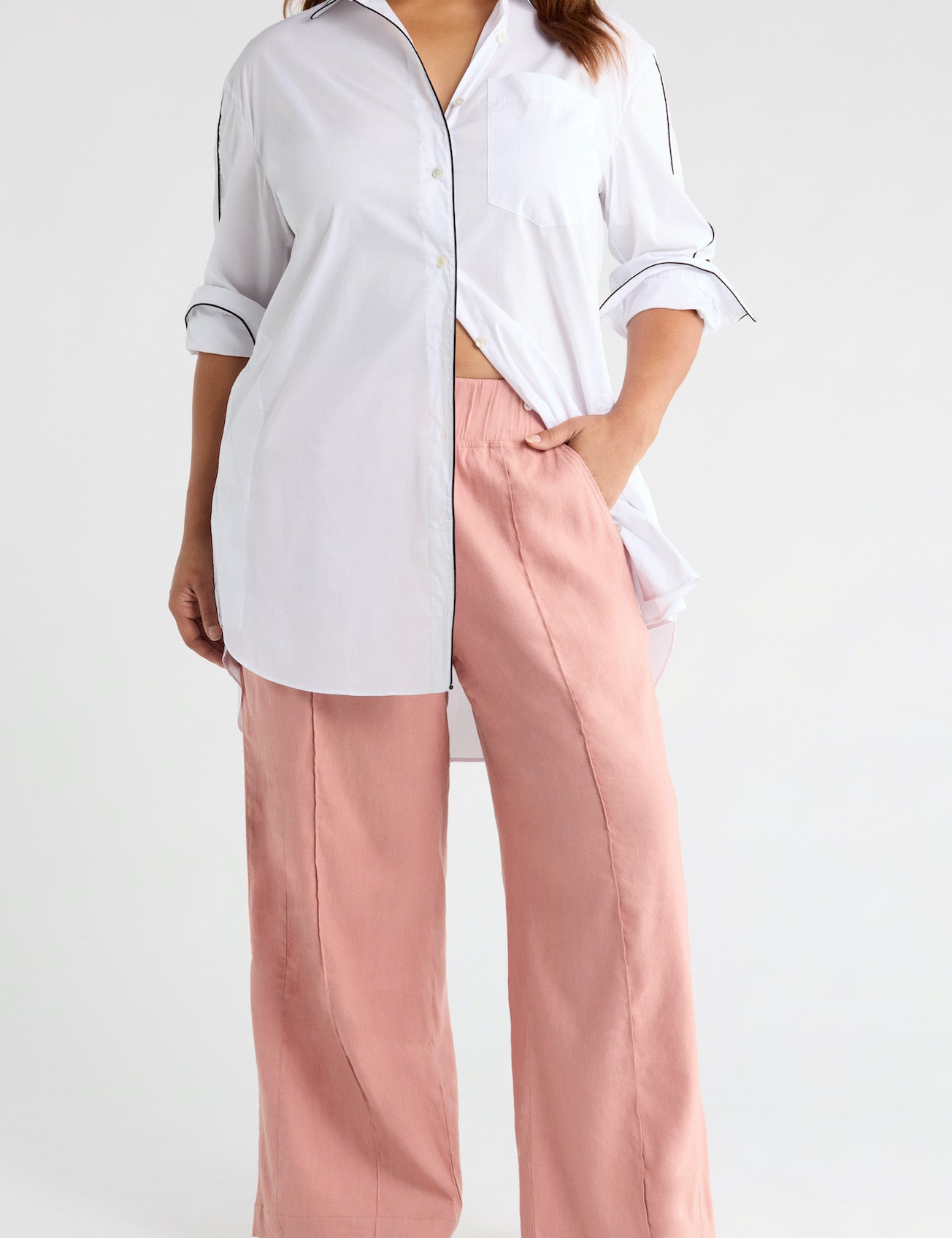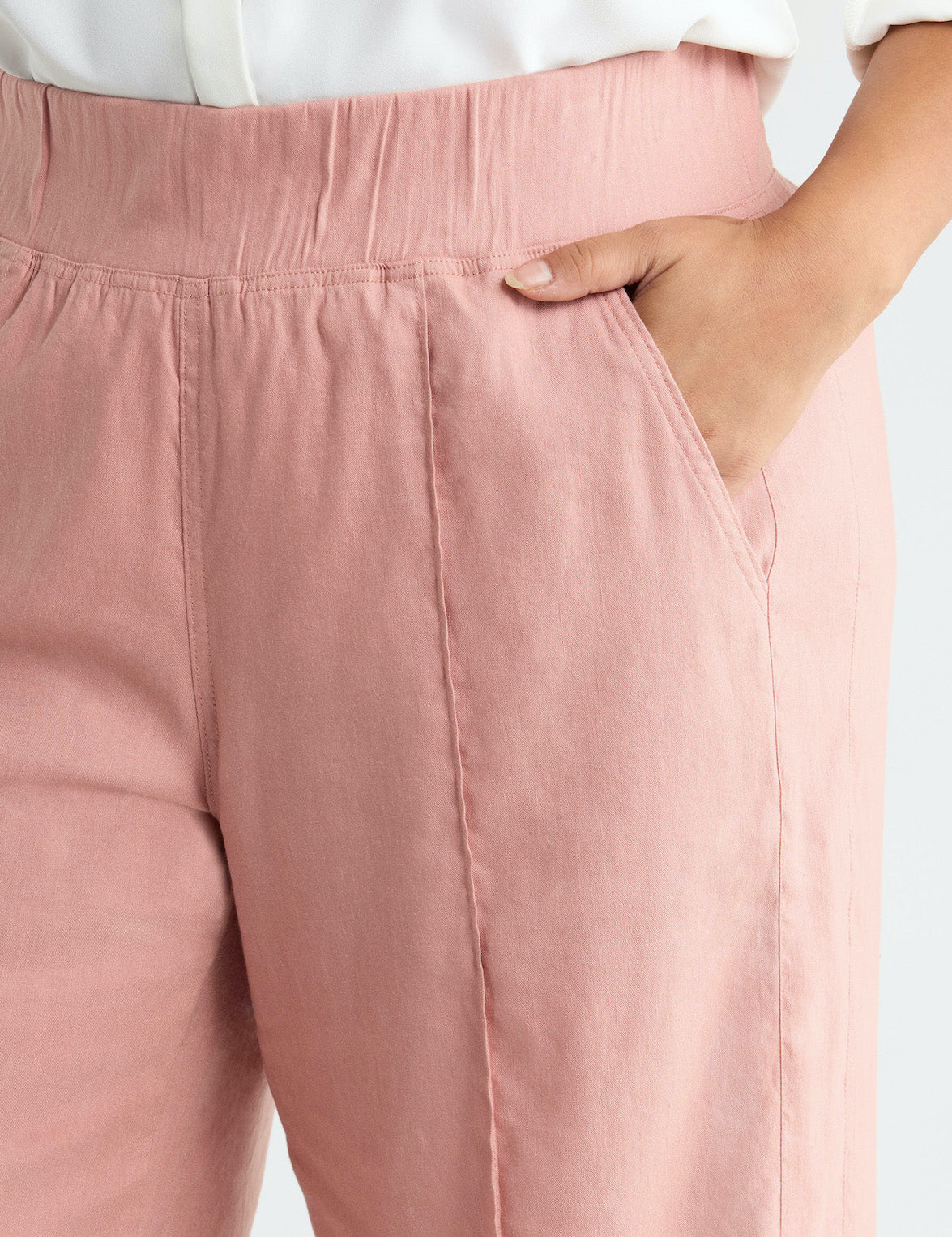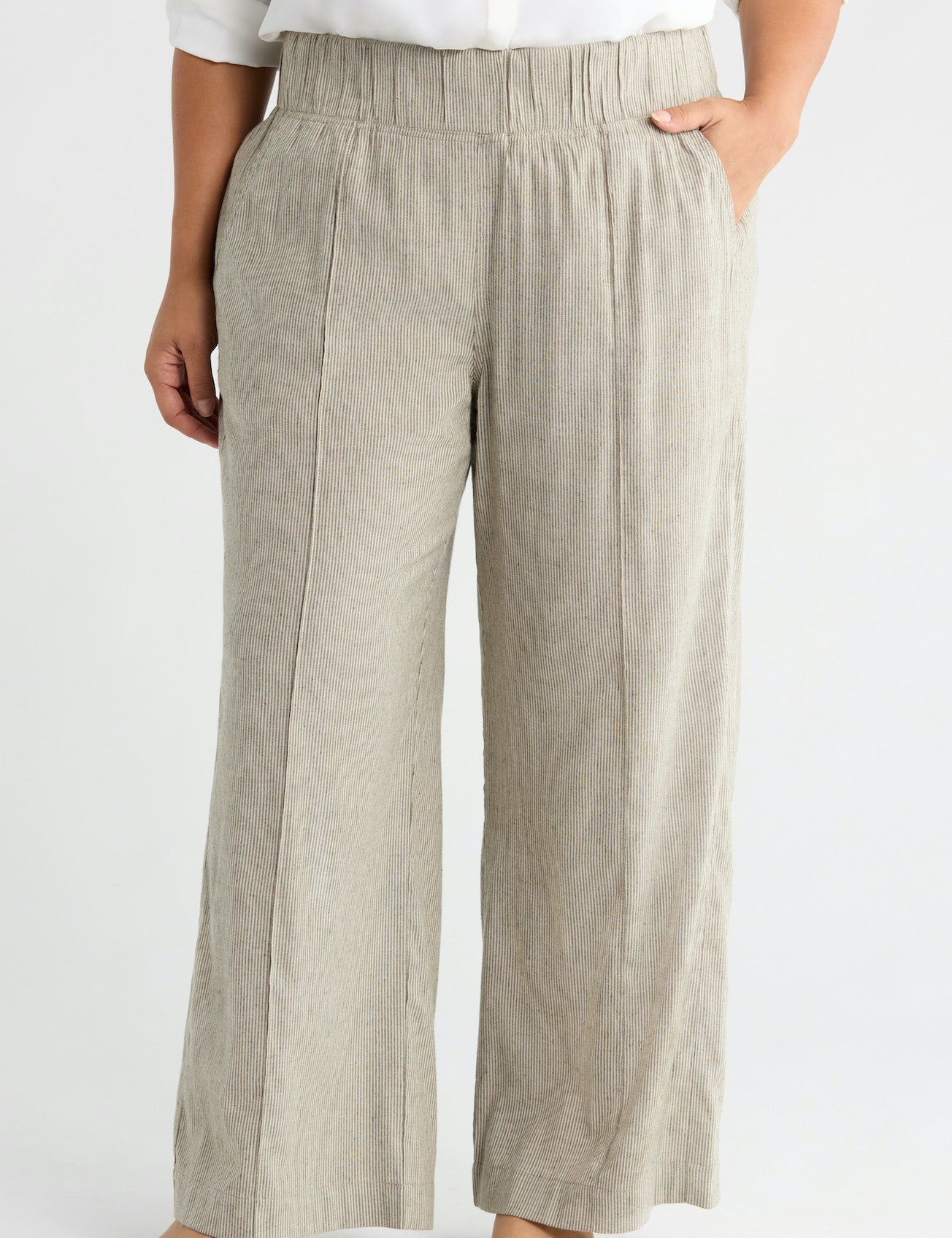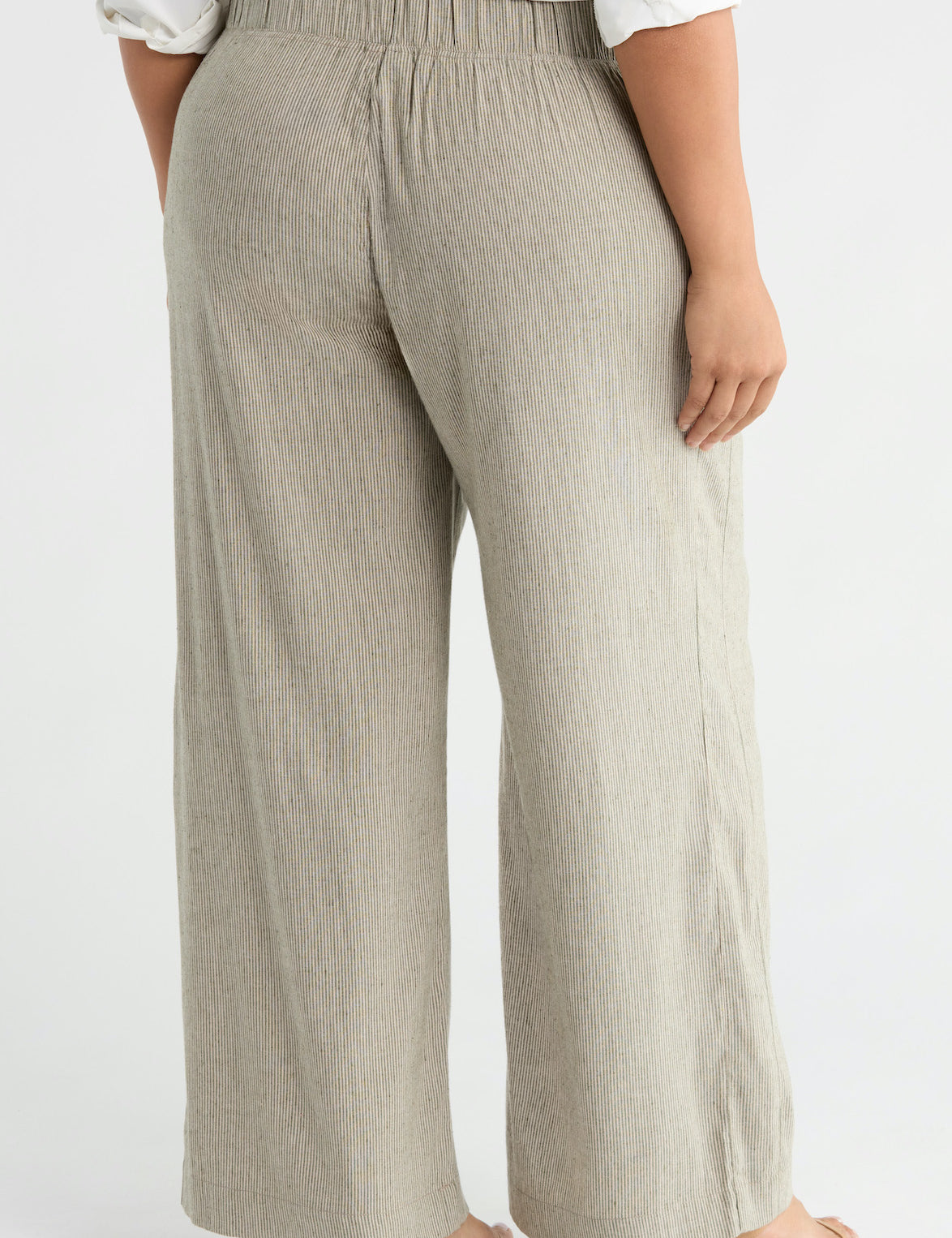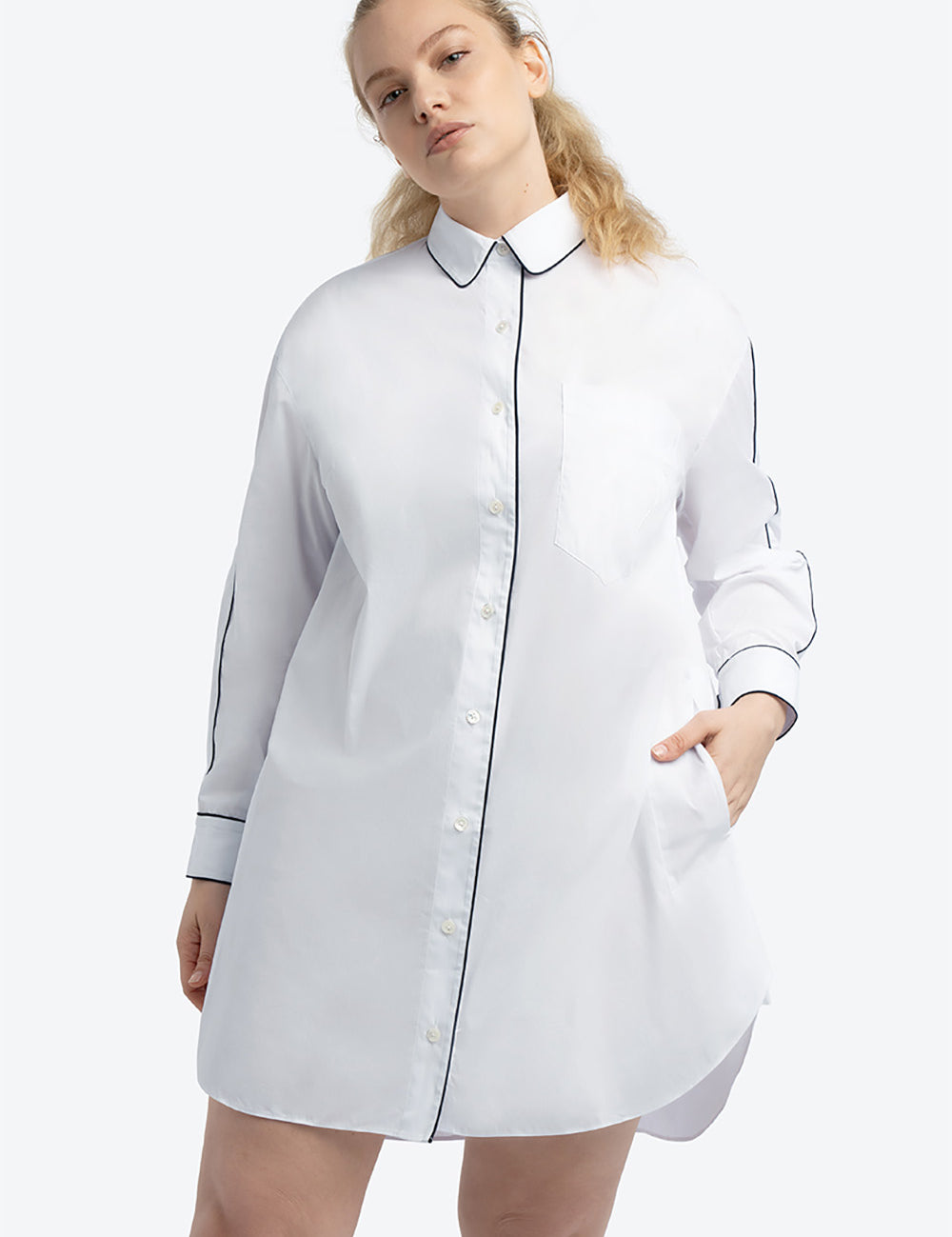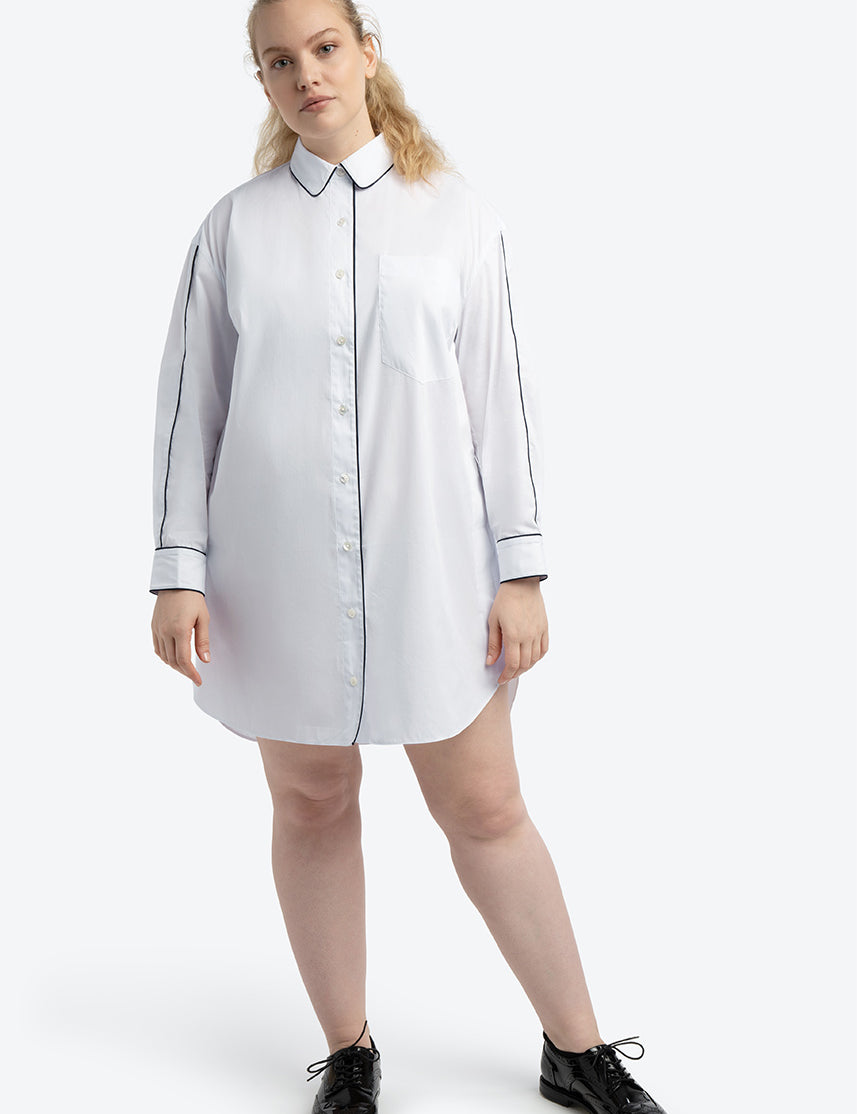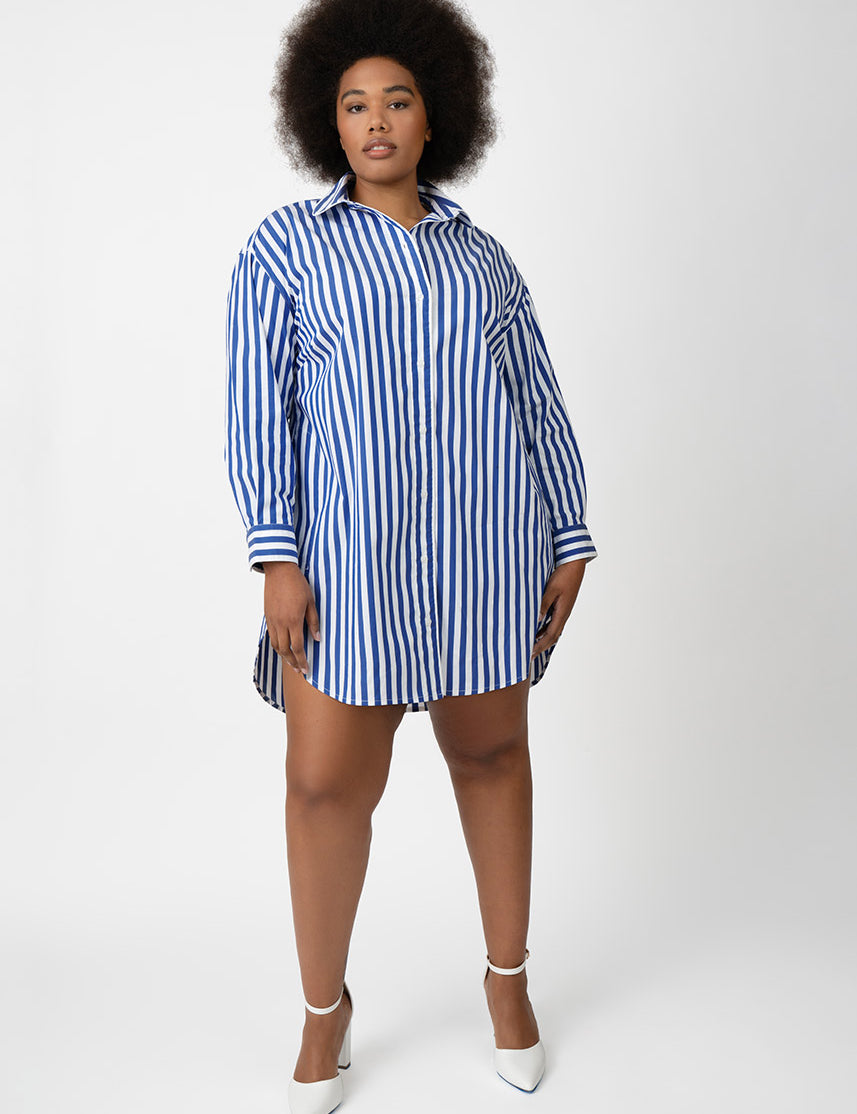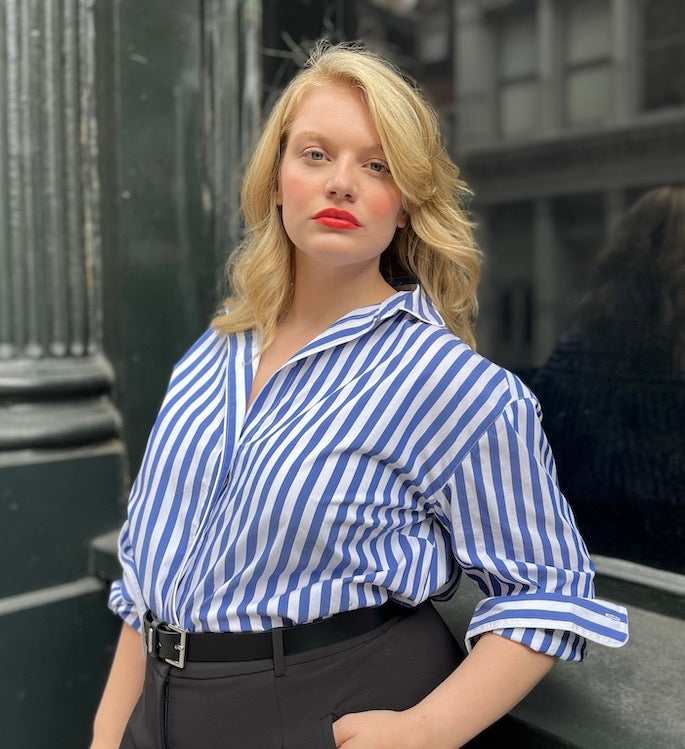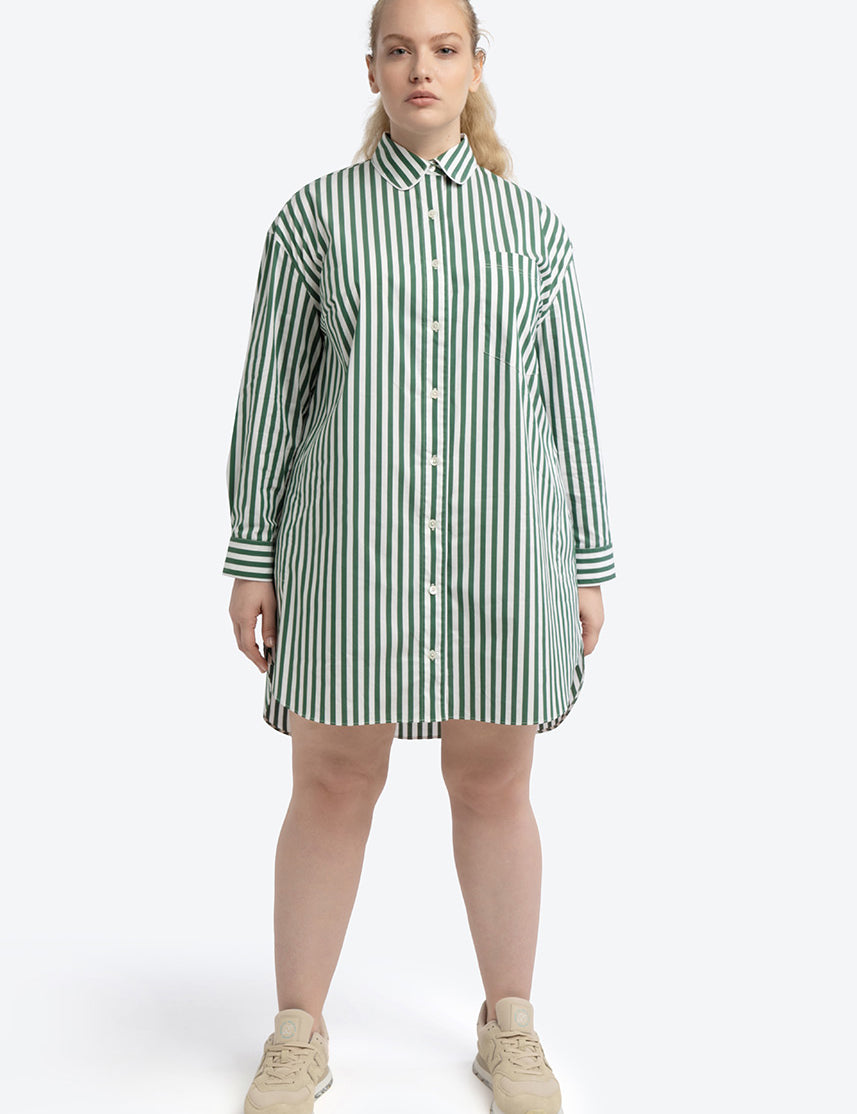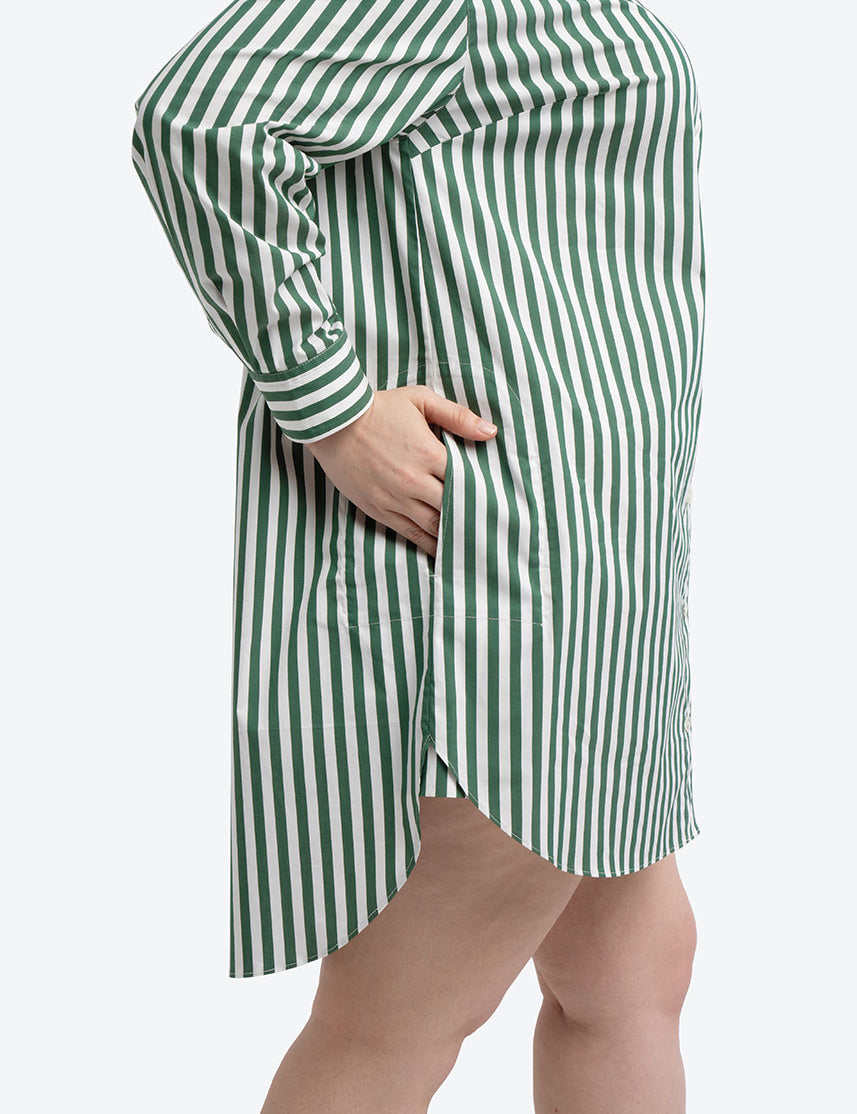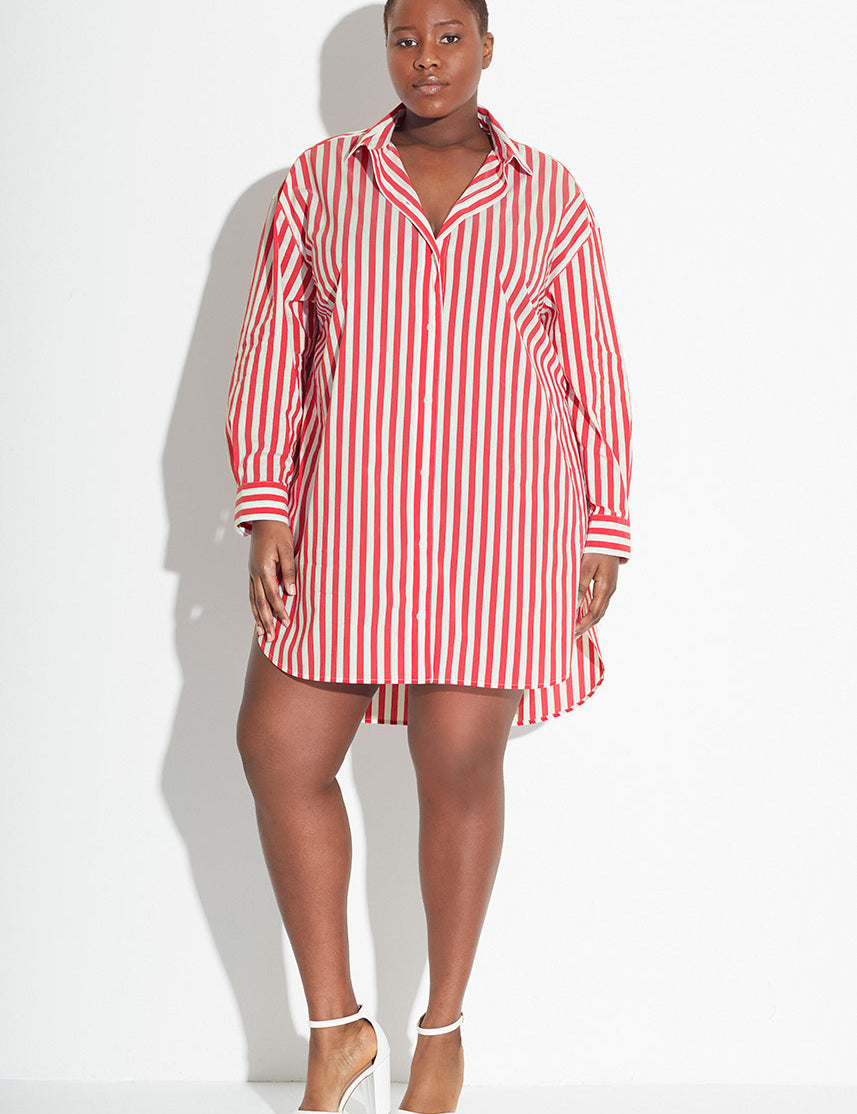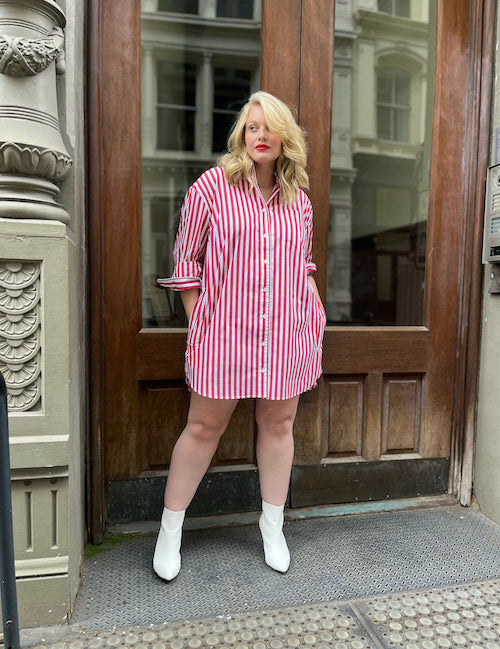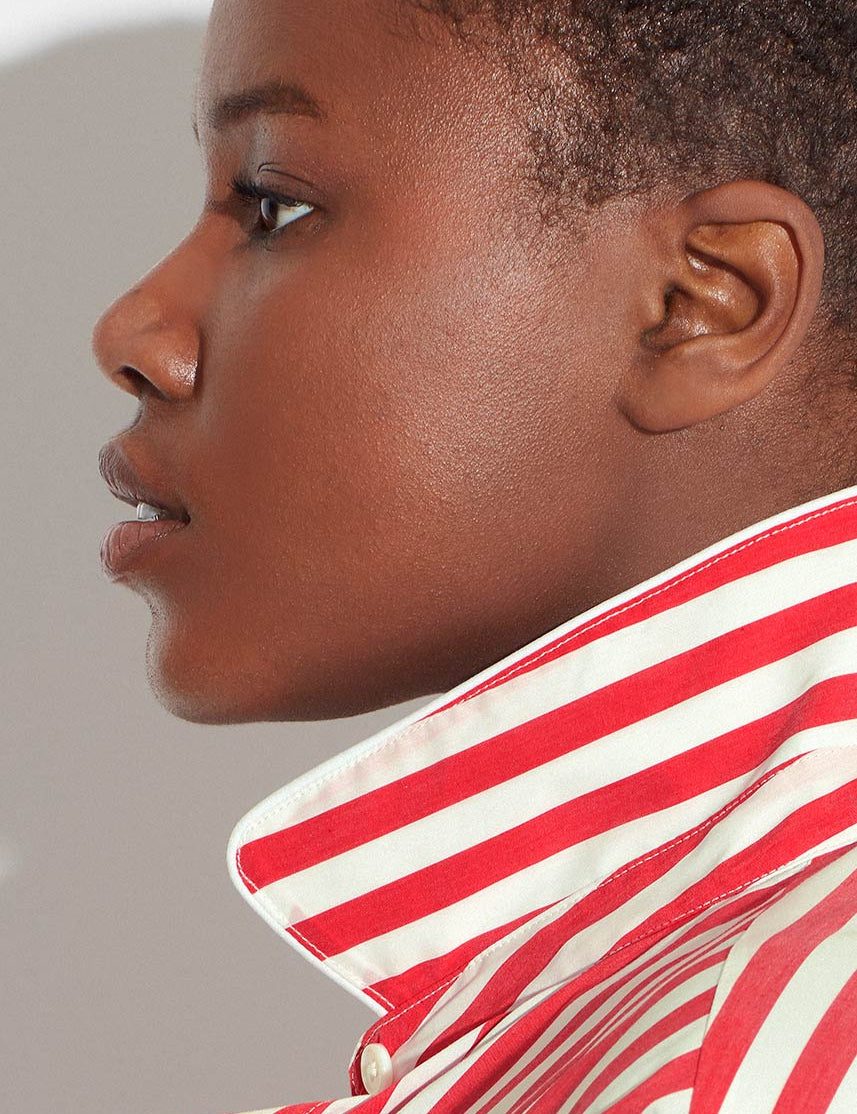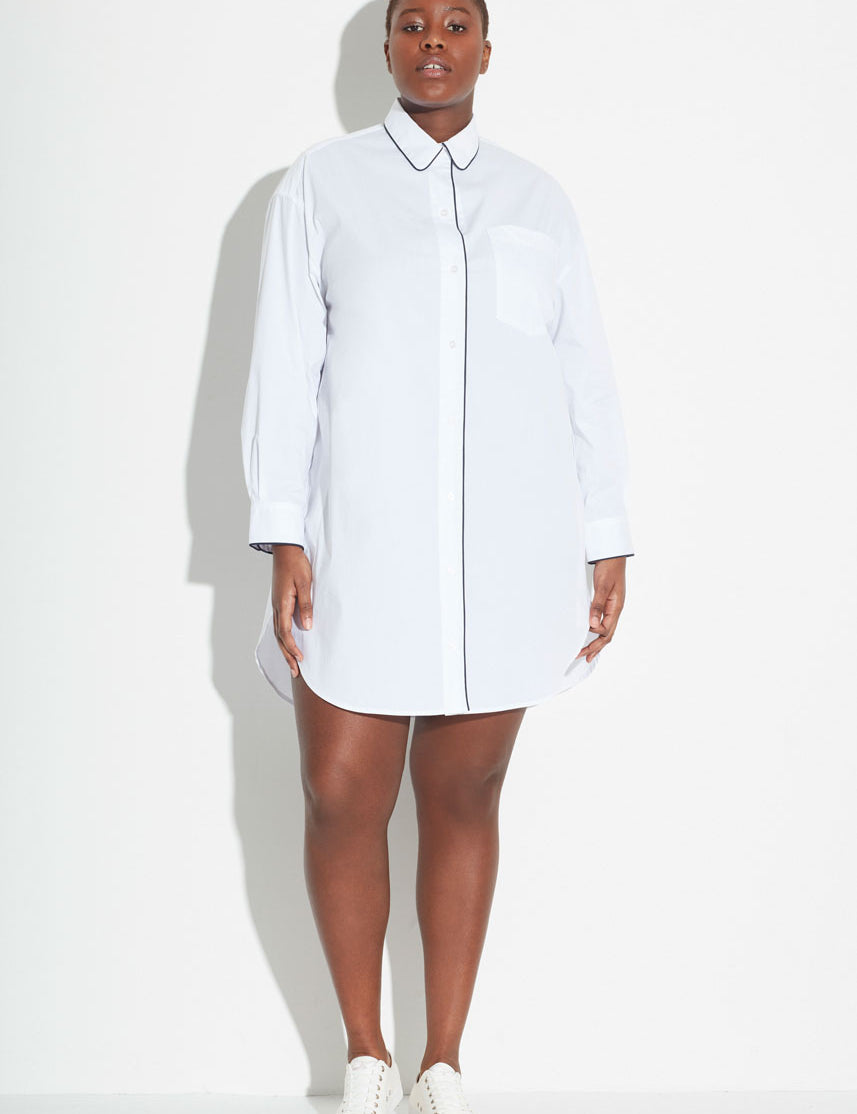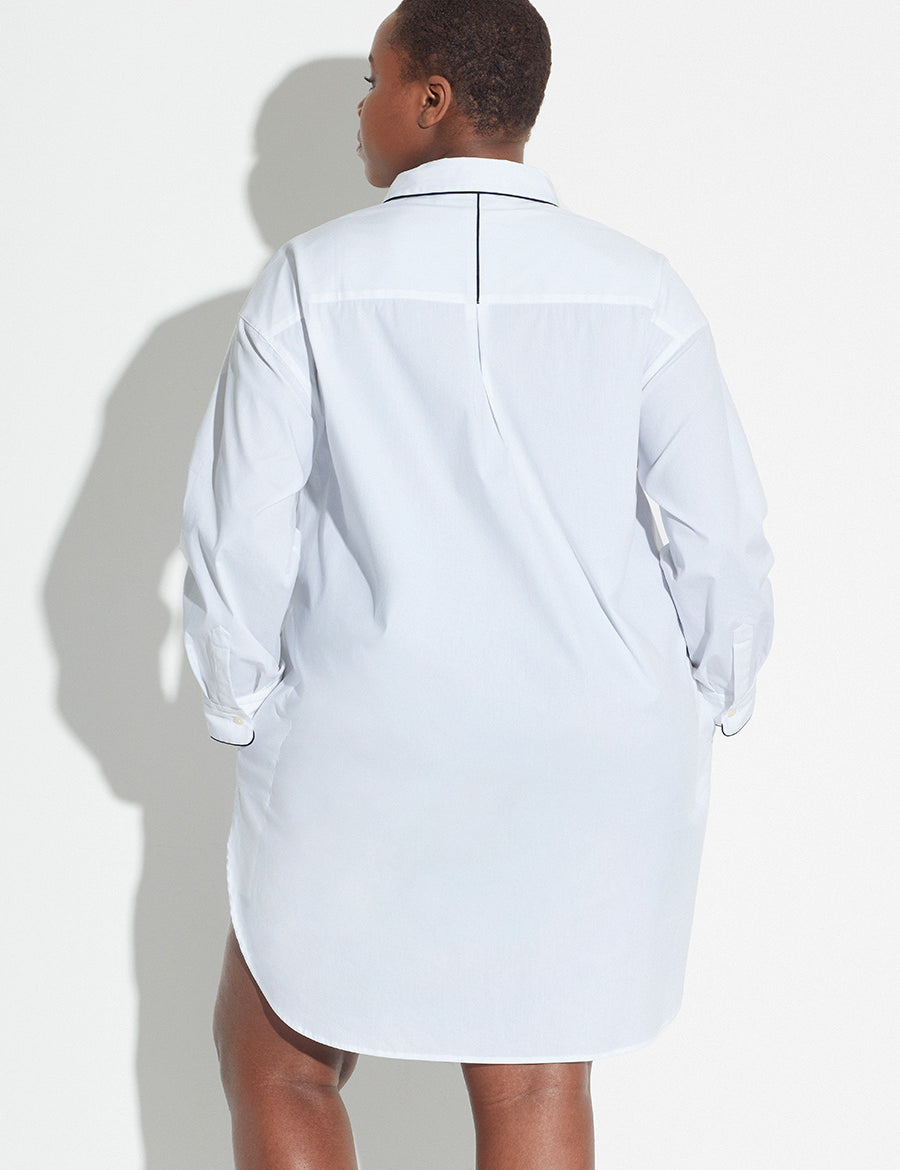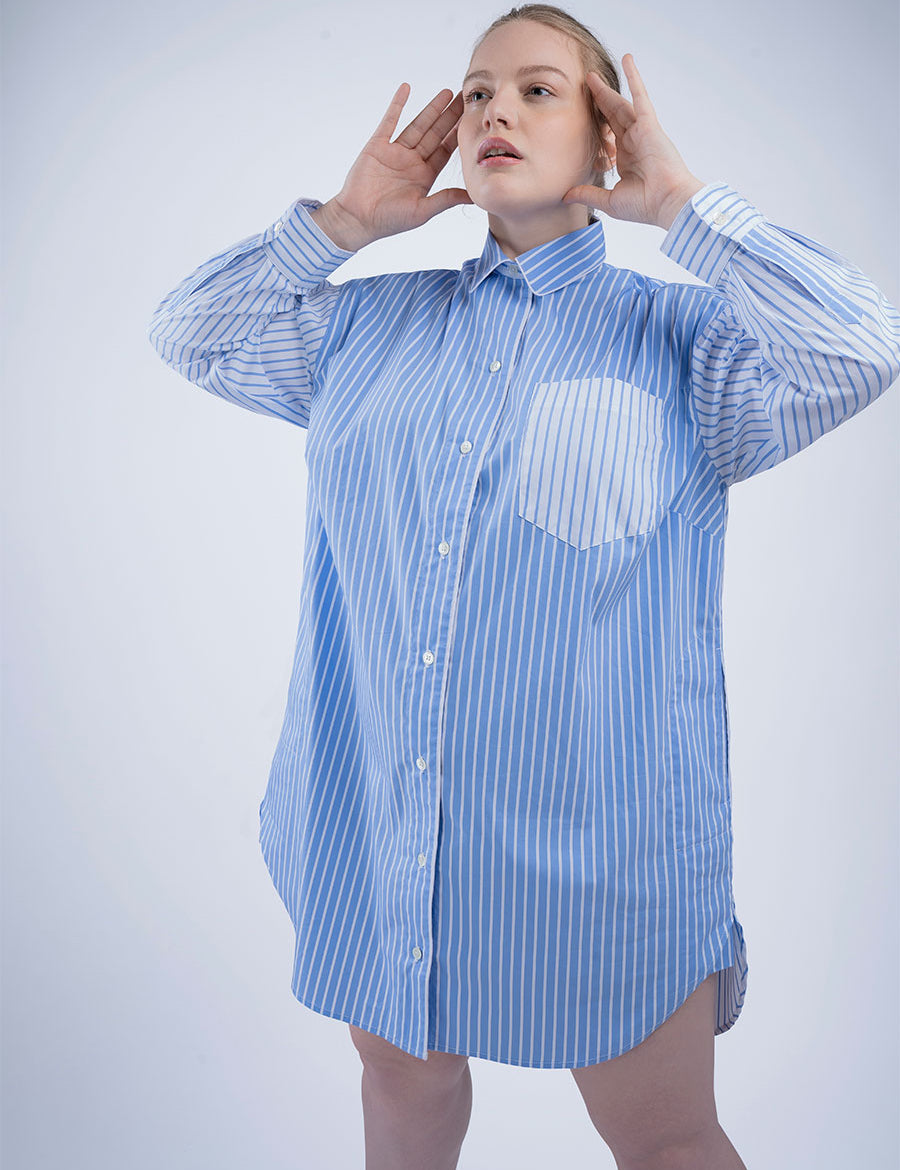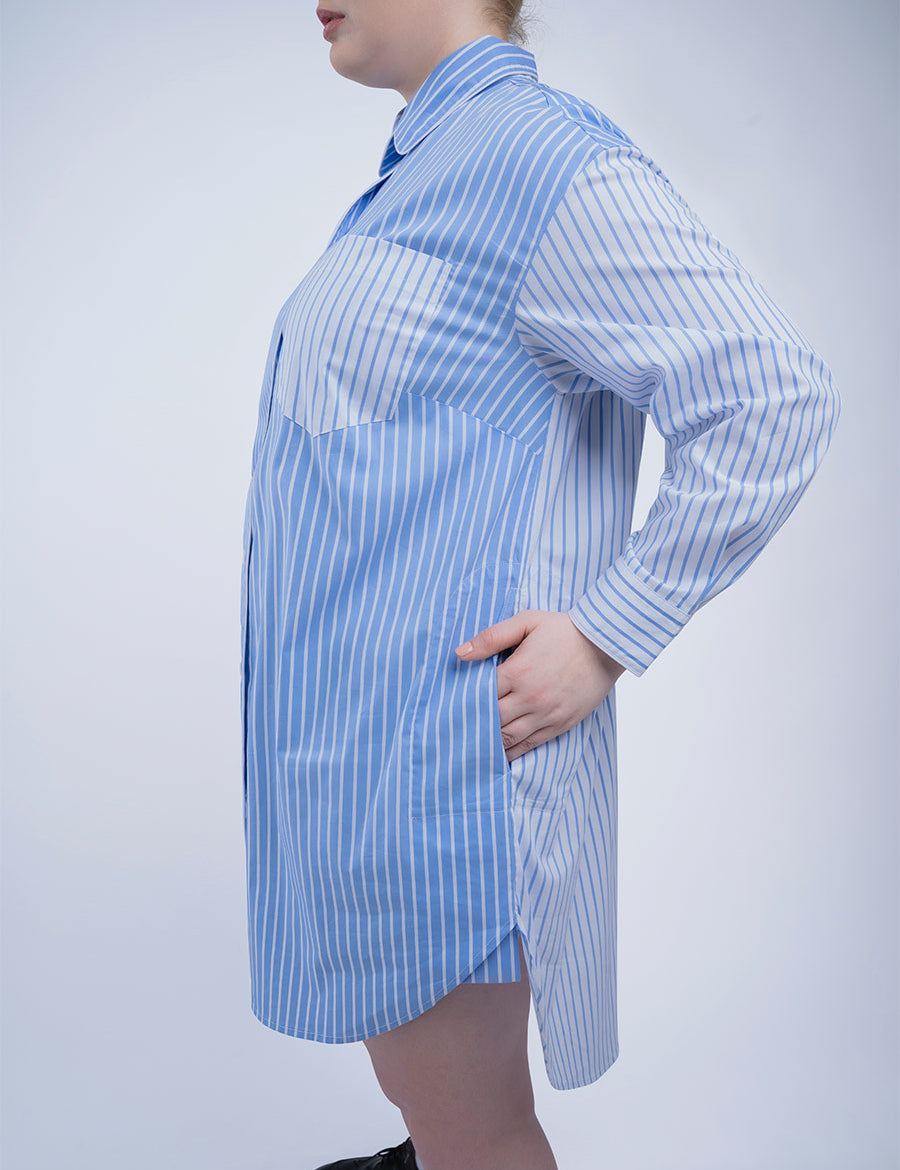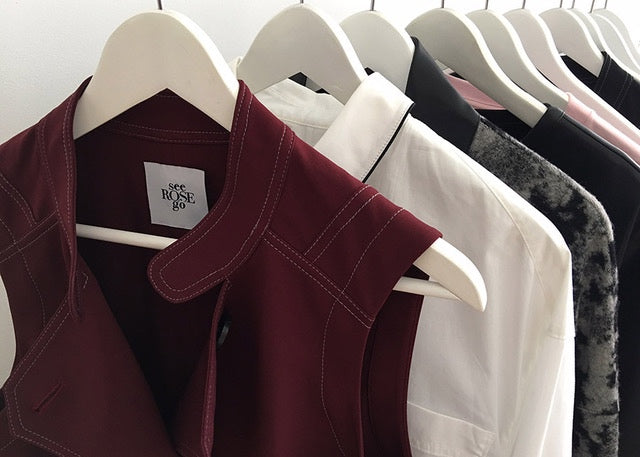First off, let’s get to The ‘Rule.’ Talking about stripes can conjure up some emotions for curvy women. For many women wearing a plus size the "how to wear stripes" rule has been drilled into them from a young age. While flattering can mean different things personally its been thrown at women wearing a plus size assuming an unhappiness with their body thus everything has to be flattering. Hence the ‘rule’ to stay away from stripes especially horizontal stripes. Its time to flip these plus size fashion rules off the table New-Jersey-Housewives-Style. A little reprograming is in-order to smash out dated styling and harmful plus size clichés. Think of it this way - historically, horizontal lines have been the uniform of the outcast, the maverick. So really, you belong in stripes baby. Slimming rules be damned! Wear stripes because it's actually a rebellious act connecting us to a long history that our ancestors were a part of. I couldn’t think of a pattern more appropriate for plus size women to wear with authority.

Whether used on a lighthouse or a zebra crossing, the stripe pattern grabs our attention. In nature, the zebra’s stripes confuse predators or can warn you’re about to be stung. Stripes are the timeless uniform that Picasso paints in and the Ramones rage in. Yet, stripes are one of the only patterns that everyone loves to wear from your 2-year-old neice to 80-year-old grandpa. Stripes are one of the transcending fashion forces you can wear casually walking your dog in the park or to an elite black-tie affair. Which brings to mind - where did this all encompassing pattern come from in the first place?
Its hard to imagine this chic and timeless pattern was once a tell tale sign of a social outcasts. Dating back to the Middle Ages stripes were worn to signify outcasts as it was highly distinguishable. Stripes were even deemed ‘the devil’s cloth’ since convicts would wear a stripe jumpsuit to easily spot an escapee. It wasn’t until the 20th century that many States decided to discontinue to use stripes as uniforms. The pattern remains an active cliche to depict prisoners in popular media. In 1959 Johnny Cash’s wrote his famous ‘I Got Stripes’ which demonstrates the feeling stripes could conjure.
“I got stripes, stripes around my shoulders
And them chains, them chains,
They’re about to drag me down”

In 1783, newly formed United States of America needed a flag to call their own. The designed included 13 red and white stripes representing the 13 British colonies that fought for freedom from England’s power. Around the same time the stripe also had become a symbol of the 1789 French Revolution. The pattern was folded into a rosette and on hats. The real about-face came (as always) with iconic women looking to update their style sense. When Queen Victoria dressed her son Albert in a sailor suit to board the Royal Yacht in 1846 a fashion style revolution also took place.
Sailors had been wearing horizontally striped shirt uniforms for years for similar reasons, 1. it was easy to spot if anyone happened to fall overboard. 2. The pull overs were also buttonless symbolizing a shipmates inferior status to the captain and officers. Queen Victoria’s son donning a sailor uniform made the pattern youthful delivering all the optimism that comes with it.

By the time fashion designer Gabrielle ‘Coco’ Chanel came into the picture, the horizontal stripe pattern was ripe for a meteoric rise. During one holiday at the French Coast, she fell in love with sailor uniforms. These uniforms inspired her minimalistic 1917 nautical-themed couture collection. It was Coco who designed the official popular Breton t-shirt with details of 2-inches of white stripes and then a 1-inch navy stripe. Some note (as long as we are talking history,) it is called the ‘Breton’ striped top after Breton sailors, who wore the top with 21 stripes to symbolize each of Napoleon’s victories.
Coco designed the loose fitting shirt to be worn with wide-legged trousers to empower her female audience. The allure was irresistible for likeminded celeb women of the time like Marilyn Monroe and Audrey Hepburn. Stripes started appearing on blazers, striped dresses, cardigans and evening gowns.
Whatever your body shape perhaps stripes are so appealing because of their communal roots. They are a pattern uniting us in fashion, not meant to exclude by body type! At one time it may have been prisoners, then it was for rebels, today there is a unity in the comfort of timeless, dependable style.

It never fails to finds stripes every year in ready-to-wear collections. This year we saw bright color multi stripes from Kenneth Ize in form fitting blazers and leggings then bold thick stripes at Dior in button downs and maxi dresses. While 'flattering' as a concept is complicated. It’s natural to want to make the most of what you’ve got. It is well known stylist know how to use stripes like vertical stripes to produce the optical illusion of a longer line. The "power tie" refers to a stripe tie used by business men and politicians to appear a more powerful and have a distinctive presence.
We can all use some of this to our advantage.
Stripes join the ranks of pockets, tunics and the little black dress, all which we belabor in detail the history in previous posts - all fashion elements with a storied past in rebellion, independence, politics and breaking gender rules. Psychologists say that people who enjoy wearing stripes are “often good at multitasking, have a lot going on in their lives, and wear many hats.” Knowing that our See ROSE Go Lovers are multi-dimensional women accomplishing, achieving and reaching their ambition AND they love our of striped Tunic Shirt, ummm... YES! we’d have to agree.
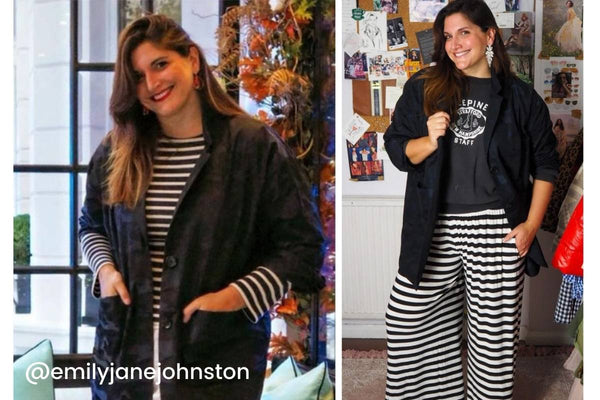
Plus size clothing have avoided stripes in the past because of outdated notions. I love to see more women breaking the fashion rules of the past. Unlike stripes, those biased rules don't have a much storied past based in history. They were made up, placing external expectations on others. Let's read that again -
Unlike stripes, those biased rules don't have a much storied past based in history. They were made up, placing external expectations on others.
Fashion should be as inclusive as it is inspiring for all women. Breaking these rules and creating new outfit ideas are part of the fun. Tell us in the comments, how are you being a rule breaker?
